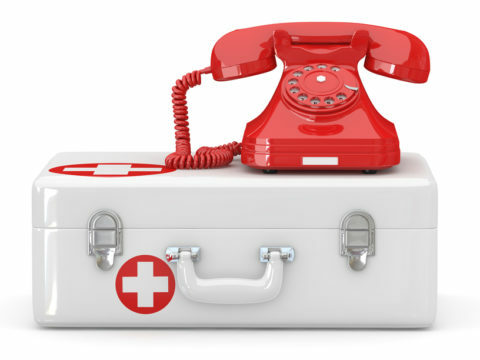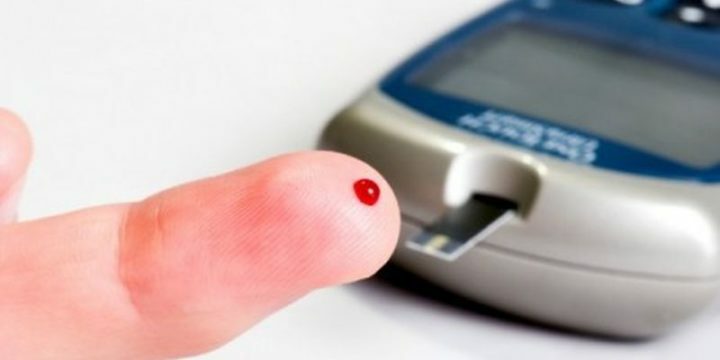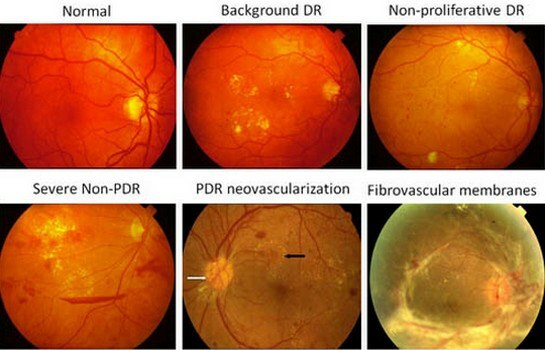Diabetic ketoacidosis is a complication that is dangerous for the life and health of diabetics if the body is unable to regard glucose as a source of energy. This happens if the production of insulin hormone is broken in the body - its deficiency or complete absence. At the same time, without replenishing energy, the body can not work, so it begins to use adipose tissue to replace insulin.
During the decomposition of fat remain ketones, which are not used in any way in metabolic processes. They accumulate, begin to gradually poison the body, and in large quantities, these substances are a poison for humans. Lack of proper treatment or untimely medical care leads to extremely sad consequences.
Danger of the disease
For the first time the symptoms of ketoacidosis were described by physicians in 1886.Doctors did not know how to treat the disease, so almost all patients died. In the 20s of the last century, artificial insulin was invented - using it, physicians learned how to save patients. Today, mortality due to the onset of ketoacidosis is less than 1%, and then in case of untimely or incorrect treatment.

Complications mainly occur in patients with type 1 diabetes. Patients with type 2 diabetes are less likely to experience a deterioration in the form of ketoacidosis. Treatment is allowed only in a hospital under the supervision of doctors. Finding a patient at home is possible, but on condition that you get acquainted with previous symptoms and measures to combat them. It is also necessary to regularly give tests to the level of ketones and monitor your health.
Causes of
Ketoacidosis in diabetes mellitus can develop both as a complication and as a result of other diseases or processes in the body. Among the main causes of ketoacidosis are:
- The patient does not know about his diagnosis - cells of his pancreas do not produce insulin, and he does not take the artificial one. As a result, a lack of a hormone can lead to poor health;
- The patient is aware of the disease, but he has been given the wrong dosage of insulin or he regularly misses the injection. In this case, the body does not receive the right dose of the hormone, which sooner or later will affect the patient's condition. The use of delayed insulin, not properly stored, is also prohibited.
Ketoacidosis also has other, more common causes:
- A transferred serious viral disease against a background of diabetes. These are influenza, ARVI, pneumonia, sepsis and others;
- Concomitant endocrine diseases( acromegaly, thyrotoxicosis syndrome, etc.);
- Cardiac and vascular diseases( stroke, infarction);
- The onset of pregnancy and childbirth( a complication arises from hormonal changes in the body);
- Stressful situations and emotional overload, especially in adolescent patients.
Symptoms of
Ketoacidosis has quite pronounced symptoms. Complication does not occur instantaneously - it takes several days to develop. Very rarely this period is reduced to one day.
- The first sign of this is the increase in blood sugar, resulting in insulin deficiency. If the patient begins to experience a thirst that does not quench even with drinking water, his mucous membranes and skin become dry. At the same time, urination becomes more frequent, the patient can lose weight sharply, there is general weakness and malaise.
- Further the state of ketoacidosis develops due to the accumulation of ketone bodies - the organism of the patient is exposed to intoxication. This manifests itself in the form of nausea, frequent calls for vomiting, the appearance of odor from the mouth, rapid or deep breathing.
- Against the backdrop of violation of the processes, the nervous system is disturbed - a patient with diabetic ketoacidosis experiences severe headaches, a peculiar inhibition, increased drowsiness, a patient is too irritated. The condition is rapidly deteriorating, leading the patient to loss of consciousness and coma.
- Along with the main symptoms, abnormalities develop on the part of the digestive tract - its cells suffer from a catastrophic deficiency in the fluid. As a result, dehydration occurs, and the remains from the body are excreted along with the vital potassium. The patient has spasmodic pains in the abdomen, a stressed state of the walls of the stomach, weak intestinal peristalsis.
Diagnosis
Diagnosis of complications in type 1 diabetes is possible at home, without resorting to specialized clinics. Using specially designed test strips, the patient or relative can learn the blood glucose level and the presence of ketone bodies in the urine. During hospitalization in a hospital, similar studies are carried out.

If the sugar is exceeded, its level reached a critical level of 13.4 mmol / l.and above, conducting a urine test for ketones is mandatory. The amount of ketones is determined in accordance with the instructions to the test strips( the result is reflected either in the "pluses" or in the number of "strips").It is recommended to conduct similar studies in cases when the patient is sick with flu or cold - so you can notice the onset of the complication in time. It should also be checked if the patient has one of the above signs of ketoacidosis.
Carrying out the diagnosis of the disease, it is necessary to exclude other diseases occurring in a similar form:
- alcoholic ketoacidosis;
- hungry acidosis;
- drug poisoning;
- poisoning with ethyl alcohol;
- lactate-acidosis syndrome, which is characterized by an increase in lactic acid;
- intoxication due to poisoning by substandard foods, etc.
If the patient is a child
Ketoacidosis in children is more likely to occur if the diagnosis is not known. Symptoms of the disease are the same as in adults. The success of treatment and the speed of recovery in this case depends on the correctness of the tactics - if the parents in time notice serious impairments and turn to the doctors. It is important to carry out all the necessary tests to immediately detect diabetes.
The frequency of ketoacidosis in children depends on the quality of the treatment, the correct dosage and intake of insulin. At a young age, all patients with type 1 diabetes are affected by complications, and in adolescence, ketoacidosis can occur in type 2 diabetes. According to statistics in Russia, this complication occurs in 35% of cases. Measures for diagnosis and treatment of children are carried out urgently, and it is important to correctly rehydrate - with poor withdrawal of fluid from the body may develop cerebral edema.
First aid
The high content of ketones in the blood in diabetes is very dangerous for the patient, so all patients are recommended to keep in the home medicine chest a test strip to determine the level of ketones and a glucometer to study the level of glucose in the blood.

If the condition worsens, a sick child or adult complains of weakness and dizziness, frequent vomiting occurs, and tests show high rates, you need to seek medical help urgently. Self-medication in this case can cause serious consequences. Moreover, if both indicators are at a high level, this means that diabetes mellitus is not controlled by the simple administration of an insulin dose - urgent hospitalization is needed.
Treatment of
Effective and successful treatment of ketoacidosis is possible if five basic actions are observed without which it is impossible to stop the process of ketone body poisoning:
- insulin therapy;
- restoration and control of water balance;
- elimination of mineral deficiency;
- normalization of acid-base balance;
- prophylaxis and treatment of concomitant chronic and acquired diseases, which can exacerbate the background of ketoacidosis and worsen the general condition.
Treatment of the patient begins with his hospitalization, where he regularly conducts laboratory tests:
- blood glucose monitoring is performed hourly before its normalization, then every 3 hours;
- urine collection for acetone - is performed twice a day for the first 2 days, then daily;
- total urine analysis every 24 hours;
- blood sampling for the amount of sodium and potassium - is done 2 times a day;
- if the patient suffers from alcohol dependence, he is tested for phosphorus levels;
- several times a day, the pH of the blood is studied until acid-base balance is restored;
- diuresis before returning to normal;
- monitoring of venous pressure;
- blood pressure check and ECG;
- in some cases conducts tests for infections.

Mistakes and procrastination in the treatment of ketoacidosis are unacceptable, therefore at the first signs of the disease it is mandatory to seek medical help.
Possible complications of
Urgency of hospitalization and analysis is necessary because the disease in cases of inactivity leads to a number of serious consequences:
- cerebral edema, especially in child patients;
- hypoglycemia;
- hypokalemia;
- cardiac arrhythmia;
- pulmonary edema;
- coma;
- lethal outcome.
Ketoacidosis - what is it? This complication should be told by the attending physician to each patient, so that he does not have such questions. If one time can get out of this state, it does not mean that it will always be so - it is important not to allow complications.
Prevention
Ketoacidosis in diabetes mellitus, regardless of the type of disease, first or second, requires immediate action. It is easy to exclude the development of complications, especially if the patient or his relatives know about the reasons for its occurrence. You should carefully consider the products you use, do not skip insulin injections, do not use a substandard hormone replacement.
It is especially important to monitor the level of sugar and ketones during seasonal viral diseases, with the onset of pregnancy, after surgical operations and other inflammatory processes. Exceeding the level of ketones is a serious threat to the life of the patient, so it is extremely important not to allow complications, and if it happens, start treatment in time.




